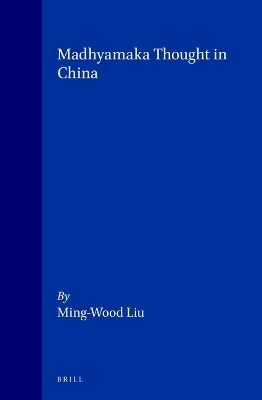
Madhyamaka Thought in China
Seiten
1994
Brill (Verlag)
978-90-04-09984-5 (ISBN)
Brill (Verlag)
978-90-04-09984-5 (ISBN)
This book examines the chief stages of development of Chinese Madhyamaka, focussing attention on the different ways the representative figures of each stage applied basic Madhyamaka principles to deal with the main Buddhist doctrinal issues of their age.
The history of the Madhyamaka, one of the two main Indian Mahāyāna Buddhist philosophical traditions, began around the second century A.D. with the appearance of the writings of Nāgārjuna and Nāgārjuna's followers. Several of these writings were transmitted to China in the first decade of the fifth century, and had exerted a considerable influence on the development of Chinese Buddhist thought. This book examines the three stages of development of Chinese Madhyamaka, focussing attention on the different ways the representative figures of each stage applied basic Madhyamaka principles to deal with the central Buddhist doctrinal issues of their age.
The chief aim of this book is to locate an ideological nucleus and to trace a general pattern of transformation, referring to which the precise significance of the key theoretical elements and the exact relationship between the main doctrinal aspects of a broad Buddhist intellectual trend can be clearly demonstrated and accurately defined.
The history of the Madhyamaka, one of the two main Indian Mahāyāna Buddhist philosophical traditions, began around the second century A.D. with the appearance of the writings of Nāgārjuna and Nāgārjuna's followers. Several of these writings were transmitted to China in the first decade of the fifth century, and had exerted a considerable influence on the development of Chinese Buddhist thought. This book examines the three stages of development of Chinese Madhyamaka, focussing attention on the different ways the representative figures of each stage applied basic Madhyamaka principles to deal with the central Buddhist doctrinal issues of their age.
The chief aim of this book is to locate an ideological nucleus and to trace a general pattern of transformation, referring to which the precise significance of the key theoretical elements and the exact relationship between the main doctrinal aspects of a broad Buddhist intellectual trend can be clearly demonstrated and accurately defined.
Ming-Wood Liu is Lecturer of Chinese Philosophy at the University of Hong Kong. He has published extensively on Chinese Buddhist thought in western and Chinese journals, such as the T'oung Pao, Philosophy East and West and Bulletin of the School of Oriental and African Studies.
| Erscheint lt. Verlag | 1.11.1994 |
|---|---|
| Reihe/Serie | Sinica Leidensia ; 30 |
| Verlagsort | Leiden |
| Sprache | englisch |
| Maße | 155 x 235 mm |
| Gewicht | 614 g |
| Einbandart | Leinen |
| Themenwelt | Geisteswissenschaften ► Philosophie ► Östliche Philosophie |
| Geisteswissenschaften ► Religion / Theologie ► Buddhismus | |
| ISBN-10 | 90-04-09984-0 / 9004099840 |
| ISBN-13 | 978-90-04-09984-5 / 9789004099845 |
| Zustand | Neuware |
| Haben Sie eine Frage zum Produkt? |
Mehr entdecken
aus dem Bereich
aus dem Bereich


